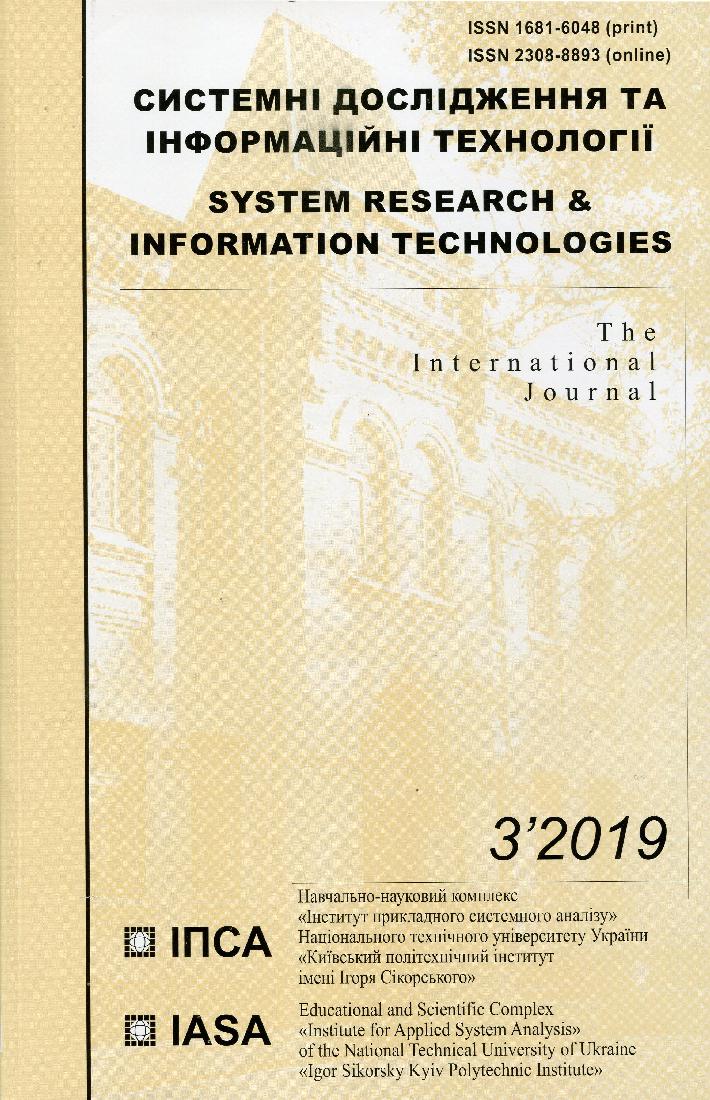Recurrent neural network usage for computer-aided lung cancer detection system
DOI:
https://doi.org/10.20535/SRIT.2308-8893.2019.3.03Keywords:
recurrent neural networks, deep learning, attention mechanism, computer-aided lung cancer detection systemAbstract
The lung cancer is one of the most aggressive types of a cancer, which is the cause of the massive number of deaths worldwide. One of the methods to prevent the lung cancer death is to detect it on the earliest possible stage. Building an automated lung cancer detection system can help doctors with it. In the scope of this article we consider building a recurrent neural network, which can analyze lung CT scans. As a result, we have built a neural network, which consists of a convolution neural network, a recurrent neural network and an addition attention mechanism, which allows to reuse predefined information about possible malignant sections on the CT scan.References
World Health Organization, "World cancer report". — 2014. — Available at: http://publications.iarc.fr/Non-Series-Publications/World-Cancer-Reports/World-Cancer-Report-2014.
Kaggle, Data Science Bowl. — 2017. — Available at: https://www.kaggle.com/c/data-science-bowl-2017.
Huang G. Densely Connected Convolutional Networks / G. Huang, Z. Liu, L. van der Maaten, K. Q Weinberger // IEEE Conference on Computer Vision and Pattern Recognition (CVPR). — 2017. — P. 2261–2269. — Available at: https://www.doi.org/10.1109/CVPR.2017.243
He K. Deep Residual Learning for Image Recognition / K. He, X. Zhang, S. Ren, J. Sun // IEEE Conference on Computer Vision and Pattern Recognition (CVPR). — 2016. — P. 770–778. — Available at: https://www.doi.org/10.1109/CVPR.2017.243
Chollet F. Xception: Deep Learning with Depthwise Separable Convolutions / F. Chollet // IEEE Conference on Computer Vision and Pattern Recognition (CVPR). — 2017. — P. 1800–1807. — Available at: https://www.doi.org/10.1109/CVPR.2017.195
Pan S. A Survey on Transfer Learning / S. Pan, Q. Yang // IEEE Transactions on Knowledge and Data Engineering. —2010. — Vol. 22, N. 10. — Available at: https://www.doi.org/1345-1359. 10.1109/TKDE.2009.191
Tran Du. Learning Spatiotemporal Features with 3D Convolutional Networks / Du. Tran, L. Bourdev, R. Fergus et al. // Proceedings of the 2015 IEEE International Conference on Computer Vision (ICCV). — 2015. — P. 4489–4497. — Available at: https://www.doi.org/10.1109/ICCV.2015.510
Bui T.D. 3D Densely Convolutional Networks for Volumetric Segmentation / T.D. Bui, J. Shin, T. Moon. — 2017. — Available at: https://arxiv.org/abs/1709.03199.
Liao F. Evaluate the Malignancy of Pulmonary Nodules Using the 3D Deep Leaky Noisy-or Network / F. Liao, M. Liang, Z. Li et al. // IEEE transactions on neural networks and learning systems. — 2017. — Available at: https://www.doi.org/10.1109/TNNLS.2019.2892409
Zhu W. DeepLung: Deep 3D dual path nets for automated pulmonary nodule detection and classification / W. Zhu, C. Liu, W. Fan, X. Xie // Proceedings — 2018 IEEE Winter Conference on Applications of Computer Vision, WACV 2018. — 2018. — P. 673–681. — Available at: https://www.doi.org/10.1109/WACV.2018.00079
Validation, comparison, and combination of algorithms for automatic detection of pulmonary nodules in computed tomography images: The LUNA16 challenge // Medical Image Analysis. — 2017. — Vol. 42. — P. 1–13. — Available at: https://www.doi.org/10.1016/j.media.2017.06.015
DicomLookup. — Available at: http://dicomlookup.com/lookup.asp?sw=Tnumber &q=% 280028,1052%29
Greff K. LSTM: A Search Space Odyssey / K. Greff, R. Srivastava, J. Koutník et al. // IEEE Transactions on Neural Networks and Learning Systems. — Vol. 28, N 10. — 2017. — P. 2222–2232. — Available at: https://www.doi.org/10.1109/TNNLS.2016.2582924
Grewal M. RADNET: Radiologist Level Accuracy using Deep Learning for HEMORRHAGE detection in CT Scans / M. Grewal, M.M. Srivastava, K. Pulkit, V. Srikrishna. — 2017. — Available at: https://arxiv.org/abs/1710.04934
Mnih V. Recurrent Models of Visual Attention / V. Mnih, N. Heess, A. Graves, K. Kavukcuoglu. — Available at: https://arxiv.org/abs/1406.6247
Ronneberger O. U-Net: Convolutional Networks for Biomedical Image Segmentation / O. Ronneberger, P. Fischer, T. Brox // Medical Image Computing and Computer-Assisted Intervention – MICCAI 2015. Lecture Notes in Computer Science. — Springer, 2015. — P. 234–241. — Available at: https://www.doi.org/10.1007/978-3-319-24574-4_28

